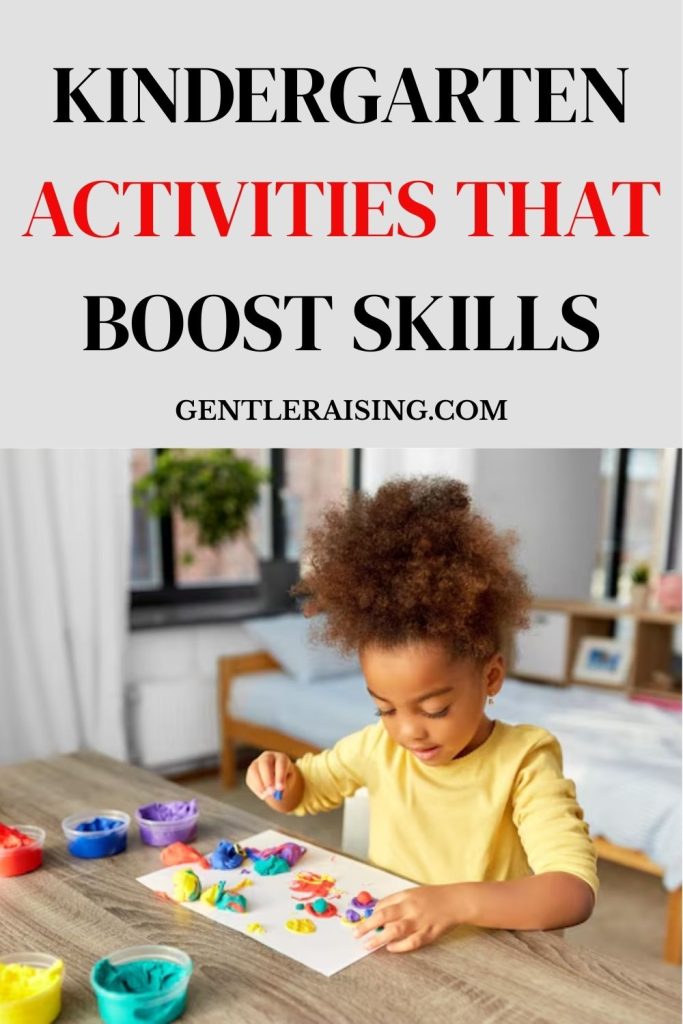Let’s be real for a second. Kindergarten is not just about colouring inside the lines or learning how to sit still during storytime. It’s the wild, sticky-fingered stage where kids are absorbing the world like sponges; emotional, social, physical, and cognitive skills are all developing at breakneck speed.
So, when we talk about kindergarten activities, we’re not just keeping kids busy. We’re shaping the way they learn and relate to others. That’s huge.
But First, What Should Kindergarten Activities Do?
Here’s the thing: good kindergarten activities are never random. They target foundational skills in ways that feel like play, not drills. Ideally, they:
- Promote motor skills (both gross and fine)
- Strengthen social-emotional growth
- Encourage critical thinking and curiosity
- Boost language and communication
- Build confidence and independence
A tall order? Maybe. But with the right balance, even stacking plastic cups can do all of the above. Yep.
1. Sensory Play: Yes, It Can Be More Than Just Rice and Beans
We all know the classic sensory bins with dry rice and a few scoops. But you can level this up. Think:
- Shaving cream on a baking tray for letter tracing
- Frozen toy rescue (ice cubes with toys trapped inside for mini archaeologists to excavate)
- Sand and water tables for literal hours of tactile exploration
Why it matters: Sensory play helps with emotional regulation (seriously), language development, and fine motor control. Plus, it’s oddly therapeutic.
Bonus tip: Add a bit of lavender oil for calming vibes. Or don’t, if chaos is your aesthetic.
2. Story Retelling With a Twist
Reading is important. But so is what comes after. Instead of just reading The Very Hungry Caterpillar, ask them to retell the story using props, drawings, or their own words.
Even better?
- Use puppets (DIY socks count)
- Set up a mini theatre corner
- Make comic strips based on the story
It builds comprehension and sequencing skills while encouraging creativity. And let’s face it, a four-year-old dramatically re-enacting a caterpillar’s existential hunger? Gold.
3. Cooperative Games That Teach More Than Just Rules
Sure, it’s important to learn how to follow instructions. But cooperative games teach so much more:
- Taking turns (hello, patience)
- Conflict resolution (no, you can’t always be the tiger)
- Teamwork
Try classics like:
- Parachute play (if you know, you know)
- Build-a-bridge challenges with blocks
- Freeze dance (with pause moments to describe how they feel)
These games sneak in social-emotional learning without it feeling like a therapy session.
4. Open-Ended Art (a.k.a. Let Them Make That Purple Cow)
Look, not every art session has to produce a Pinterest-worthy result. The best ones usually don’t.
Give them materials, paint, cardboard, old buttons, even pasta, and let them create without a specific outcome. Why?
- Fosters imagination
- Develops decision-making
- Helps kids take pride in their choices
And if the final result looks like a blob of glue wearing googly eyes? That’s art, baby.
5. Role Play and Dramatic Corners: Tiny Humans, Big Imaginations
Dress-up boxes aren’t just for laughs. They help kids understand different perspectives, explore emotions, and practice problem-solving.
Try these corners:
- Doctor’s clinic (complete with bandages and teddy bear patients)
- Grocery store (use empty cereal boxes and a play register)
- Home setup (yes, let them argue over who’s the dog again)
Let them lead the play. You’ll be surprised by what they come up with.
6. Nature Walks: A Classroom With No Ceiling
Even if it’s just a lap around the building or backyard, nature walks can spark:
- Observational skills (“Did you see that bug?!”)
- Vocabulary development (leaves, bark, clouds, oh my)
- Mindfulness and calm
Bring clipboards and crayons. Ask them to draw what they see. You don’t need a forest, just curiosity.
7. Music and Movement: More Than Just Wiggles
Music is magic. It taps into memory, rhythm, pattern recognition, and self-expression.
Ideas that go beyond If You’re Happy and You Know It:
- Create your instruments (hello, rice in a bottle)
- Dance storytelling: move like animals or weather
- Rhythm call-and-response clapping games
And let them lead sometimes. You’ll hear beats you never expected.
8. Simple STEM for Little Hands
STEM sounds intimidating, right? But for kindergartners, it’s just structured curiosity.
Here’s what that might look like:
- Sink or float experiments (with toys and fruit)
- Building ramps to race marbles or toy cars
- Mixing colours with droppers and food dye
They’re asking questions, testing ideas, and discovering patterns, without even realising it.
9. Cooking Without Fire (But With a Lot of Learning)
No stovetops required. Think:
- Fruit kabobs
- Sandwich making
- Yogurt parfaits
Why it matters: It teaches sequencing, counting, hygiene, and fine motor skills. Plus, kids are way more likely to try something they made.
10. Quiet Time Activities That Aren’t Just Naptime
Some kids nap. Some don’t. Either way, downtime is necessary.
Try:
- Puzzle stations
- Audio stories with cosy corners
- Calming jars (glitter optional!)
It gives kids time to regulate, reflect, and recharge, just like we grown-ups need after scrolling social media for too long.
So, What’s the Takeaway?
Kindergarten activities aren’t about busy work or rigid routines. They’re about setting the stage for lifelong learning, in the messiest, most joyful way possible.
Because when a child builds a tower that crashes, tells a story through sock puppets, or gets covered in paint while making their “masterpiece,” they’re not just having fun. They’re building brains, hearts, and confidence.
And honestly? That’s the kind of curriculum we all need more of.

